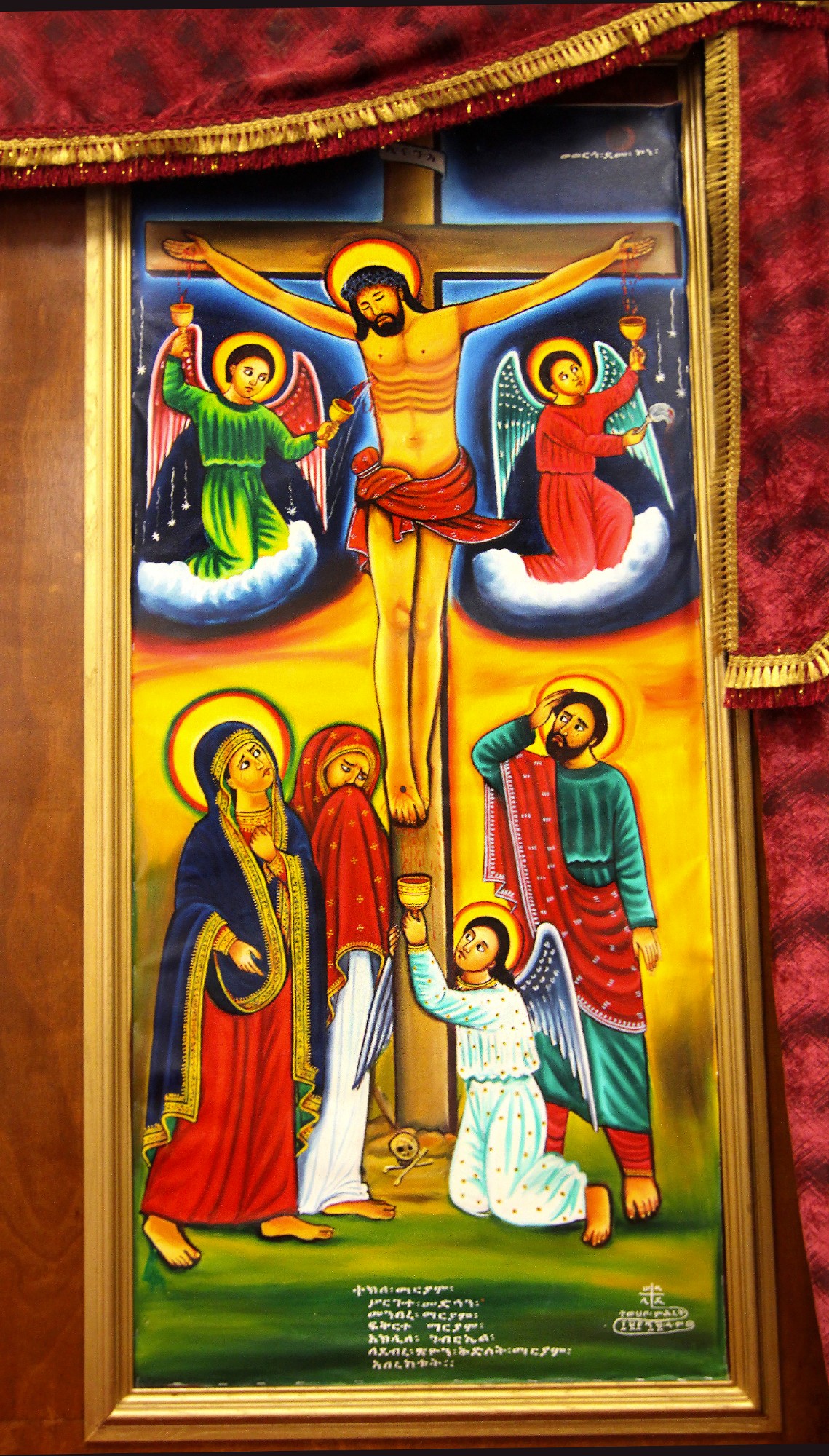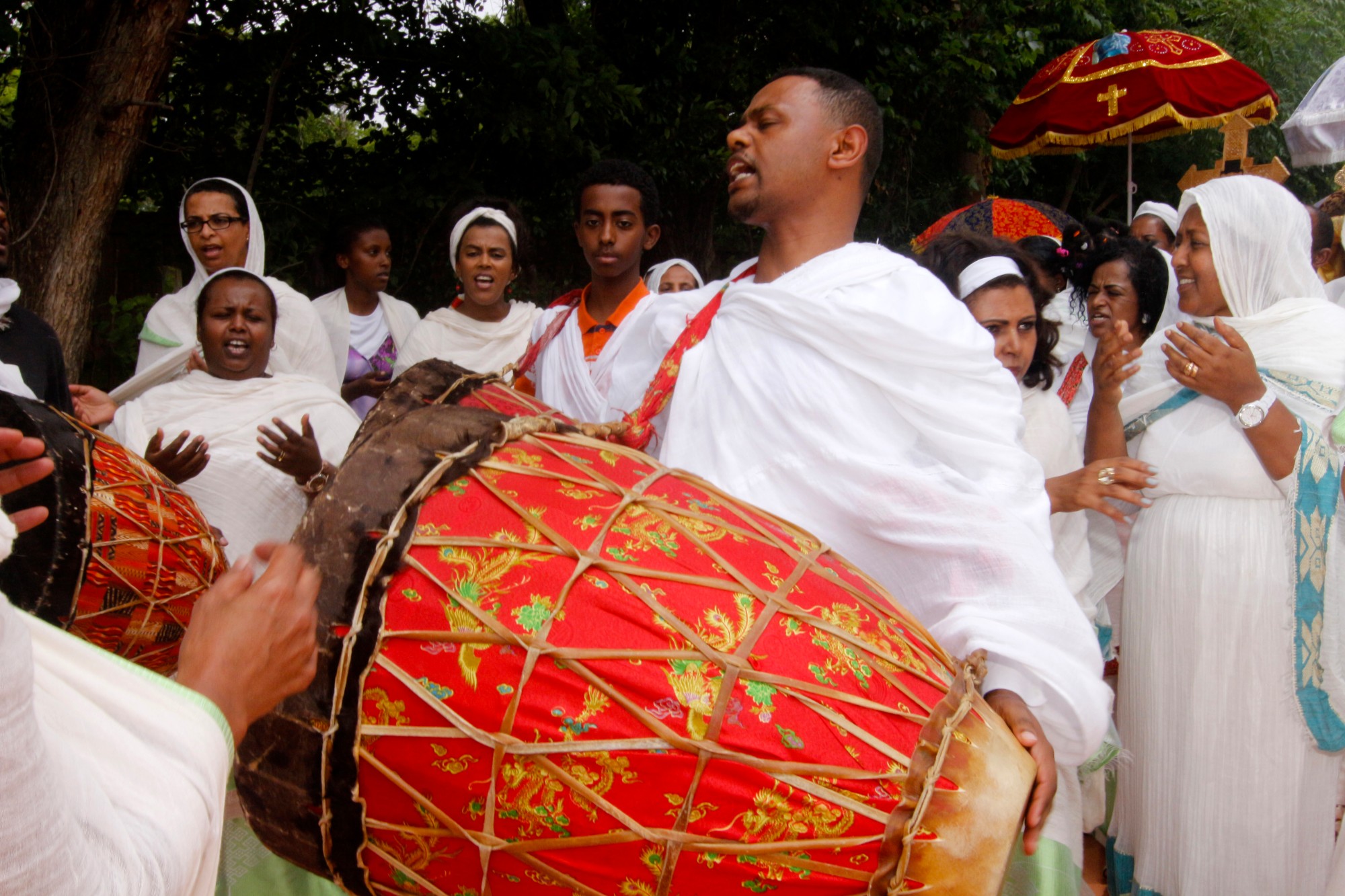Holy Scripture
The Holy Scriptures are one of the two great foundations of our faith. We believe that the word of God is not contained in the Bible alone; it is to be found in tradition as well. The Sacred Scriptures contain the written words of God, Who is the author of the Old and New Testaments which contain nothing but perfect truth of faith and morals. However, God’s word is not found only in Scriptures; there is an unwritten word of God also, which we call Apostolic Tradition. We accept both with equal veneration.
The canon of the Ethiopian Bible defers both in the Old and in the New Testaments from all other churches. In the New Testament, the number of the books is 35, divided into:
- The Gospels
- Acts
- Paul
- Apostles
- Miscellaneous
- The number of 35 New Testament books is obtained by adding to the Western Church New Testament, the eight books of a collection of constitutions and canons of the Church known as SINODOS.
Of the Old Testament canon, the number of the books is 46:
- The Law
- The Kings
- Solomon
- Prophets
The Ethiopian version of the Old Testament was made from the Septuagint and it includes the Book of Enoch and Baruch.
The Five Pillars of Mystery
The Ethiopian Orthodox Church has Five Pillars of Mystery through which it teaches and demonstrates its basic religious belief. They are called Pillars of Mystery due to the fact that they support and strengthen the faithful in religious teachings as a pillar supports a roof. These mysteries have Biblical foundation (1 Corinthian. 14:19). Accordingly, the five pillars of mystery are expressed in the Creed, which is the confession of our Faith.
- Mystery of the Trinity
- Mystery of Incarnation
- Mystery of Baptism
- Mystery of the Holy Communion
- Mystery of the Resurrection of the Dead

Sacraments
The seven sacraments are necessary to every believer. Matrimony and Holy Orders are very necessary to the church, the first being necessary for the preservation and growth of mankind, and the second for consecrating the clergy required to perform the various church services, because they can never be performed by the laity.
There are seven sacraments:
- Baptism (Mistre Timket)
- Confirmation (Mistre Meron)
- Penance (Mistre Niseha)
- Holy Communion (Mistre Qurban)
- Unction of the Sick (Mistre Kendil)
- Matrimony (Mistre Teklil), and
- The Holy Orders (Mistre Kehenet).
The first four sacraments are necessary to every believer. Although the other three are not necessary for every believer, Matrimony and Holy Orders are very necessary to the church, the first being necessary for the preservation and growth of mankind, and the second for consecrating the clergy required to perform the various church services, because they can never be performed by the laity.
Certain prayers are set for each sacrament to ask for blessing of the Holy Spirit.
How We Worship
At the Debre Tsion Saint Mary Ethiopian Orthodox Tewahedo Church, we practice the traditional worship services according to the Ethiopian Orthodox Tewahedo Church.
Taking our shoes off is one of the ways that we pay our respect to God. We believe God’s presence is among us while we worship Him in our church. Therefore, like our biblical fathers, Mosses, and Joshua, we would not dare to stand in His presence with our shoes on. “Take off your sandals, for the place you are standing is Holy ground” (Exodus 3:5) (Acts 7:33) (Joshua 5:13). Above all, the Ethiopian Orthodox Tewahedo Church believes that our Lord and Savior, Jesus Christ, was born from the Virgin Mother Mary; baptized, crucified, and resurrected in order to save us through His flesh and blood.

Ecclesiastical Objects
TSENASEL
This is a special, Ethiopian-made instrument used for hymns and chants. It was invented and produced by the well-known Ethiopian hymnology scholar, St. Yared in the 5th century.
KEBERO
A Kebero is another Ethiopian-made drum used for hymns during thanksgiving and praising the Almighty.
MEKWAMIYA
The Mekwamiya is a prayer stick that has a sheep-horn shape on top. It symbolizes the cross upon which Jesus Christ was crucified, and is used for the liturgical movement during prayer after midnight on holy days.
ZANTELA (Umbrellas)
The umbrella is used not as a shade from sun or rain, but as a mark of distinction. It symbolizes the grace of our Lord, as Moses led the Israelites with the help of clouds to the Promised Land.
TSENA (Censer)
The Tsena is used for burning incense. It symbolizes the Trinity and the flame that Christ doweled on the womb of our Blessed Virgin Mary.
VESTMENTS
Vestments worn by the clergy to administer the sacraments of the church are clothing blessed with prayer, specially woven, and kept in a particular place befitting the spiritual service. Liturgical Vestments are kept in a vestry of the church in a clean condition. It is forbidden to wear them in other places for other purposes.

